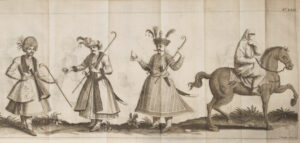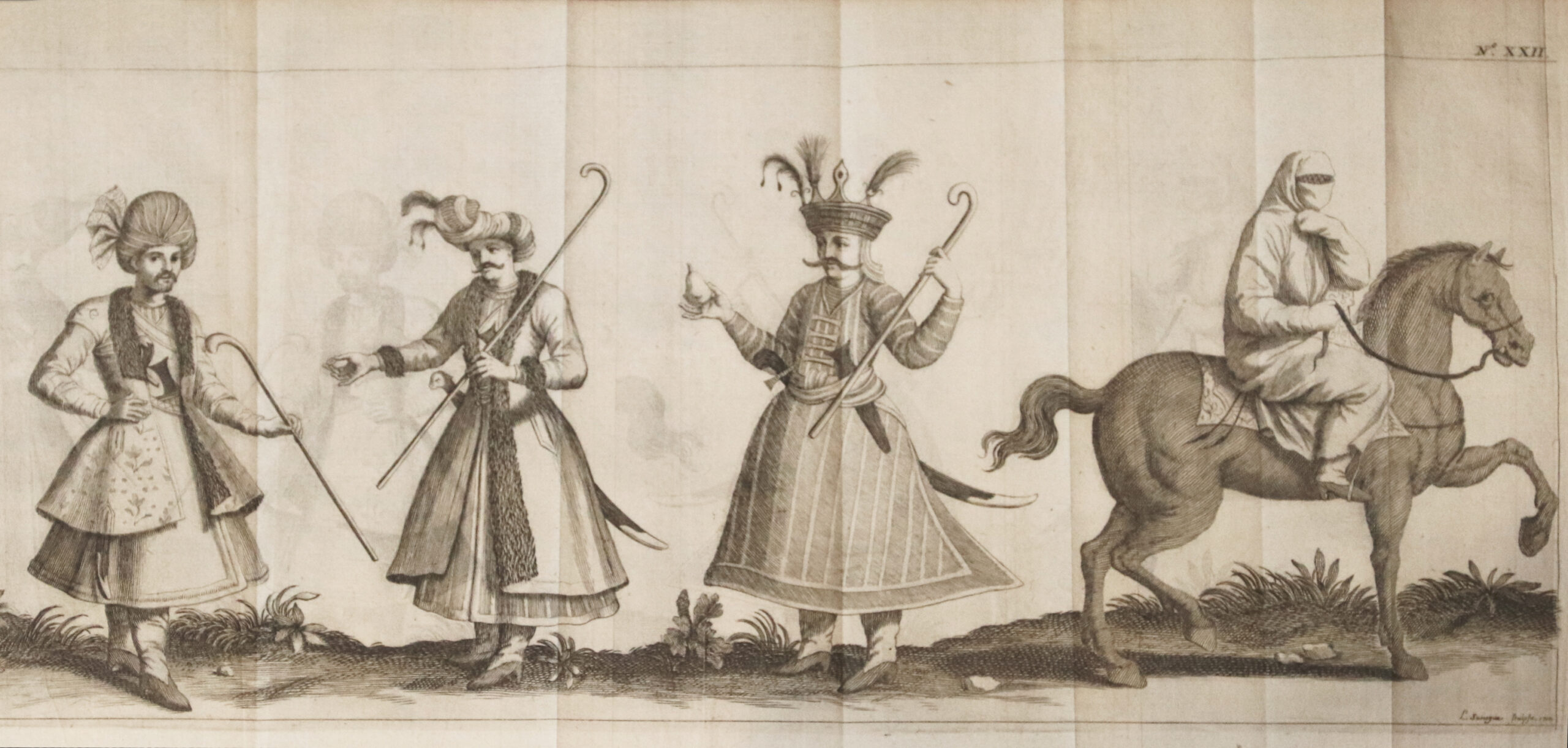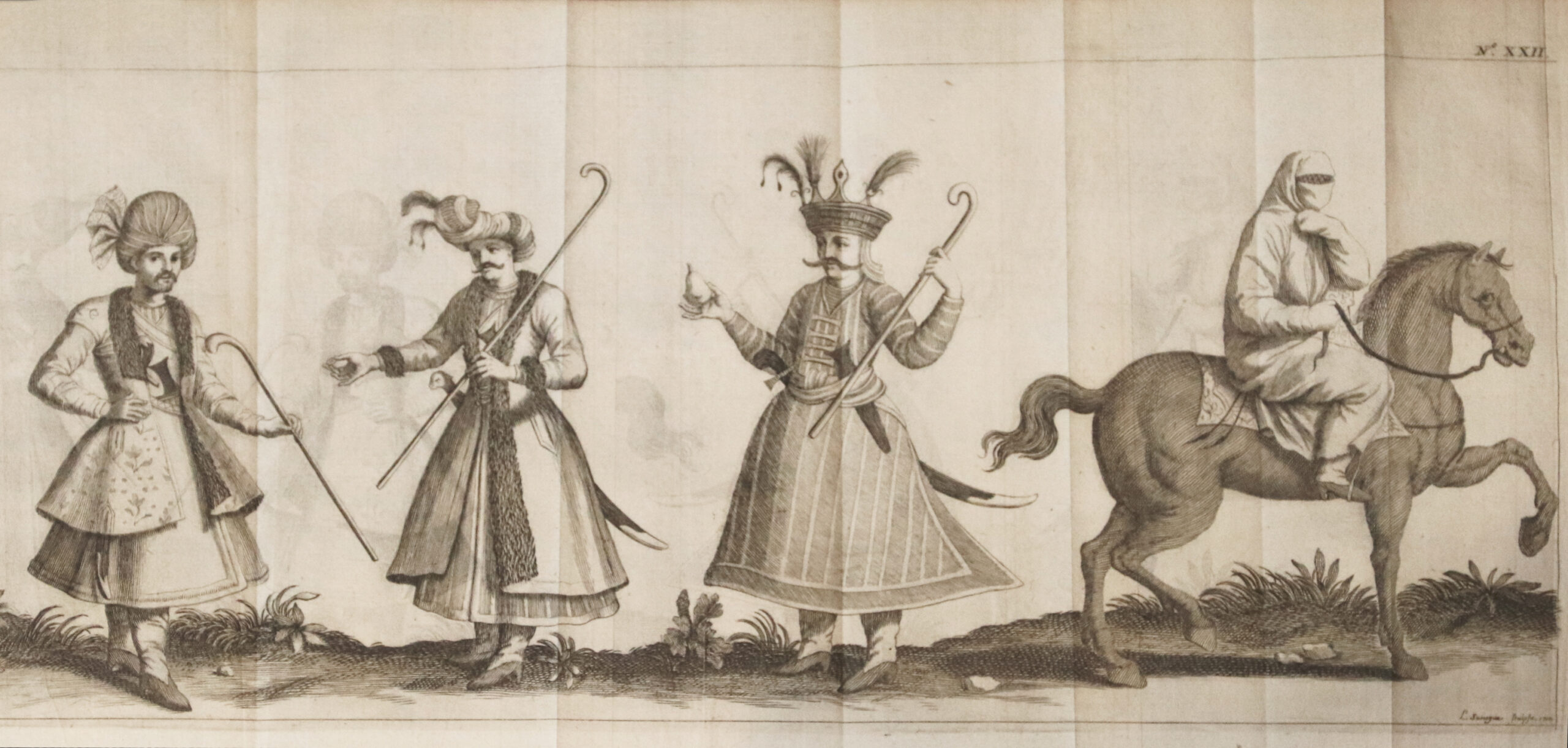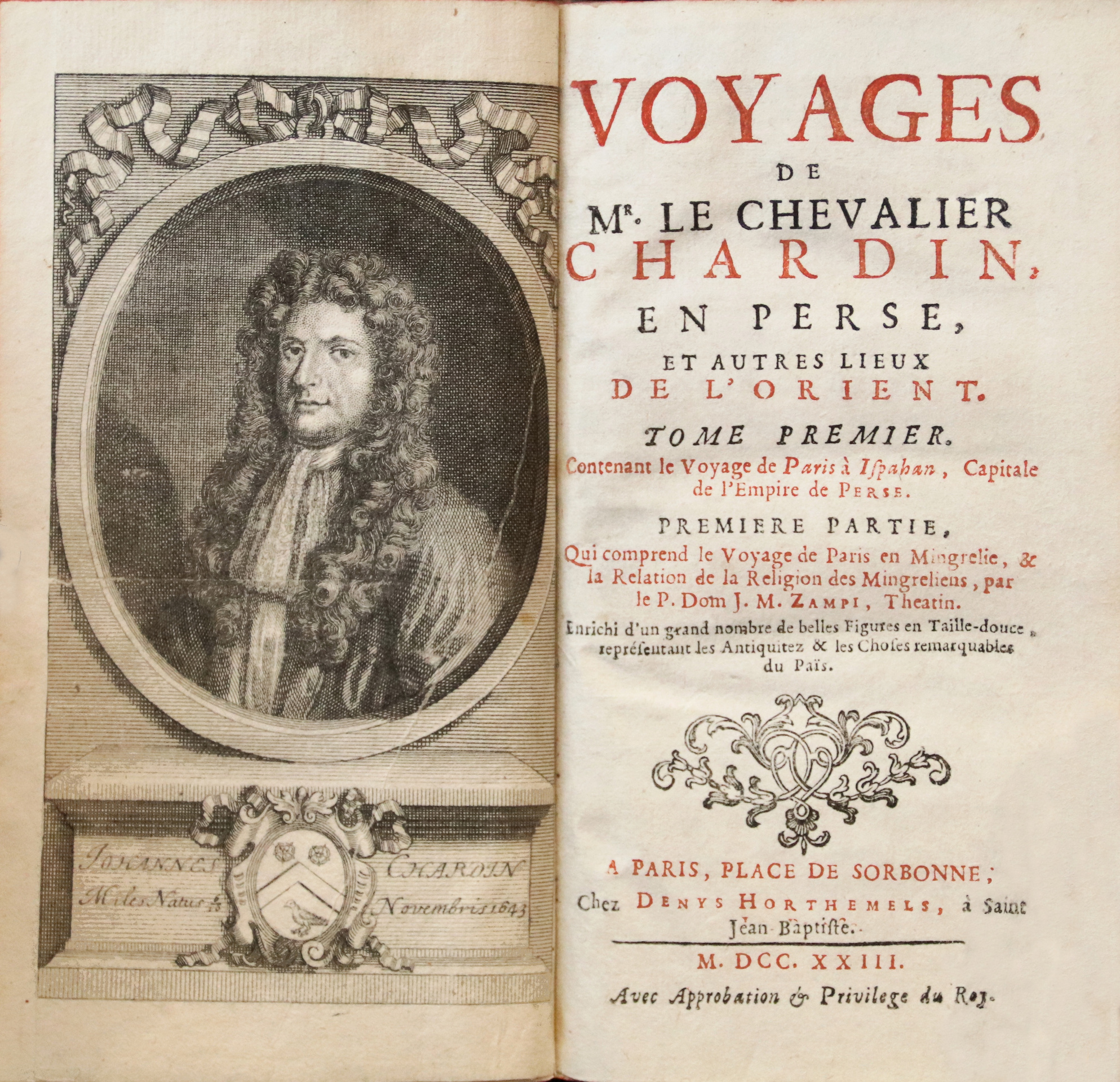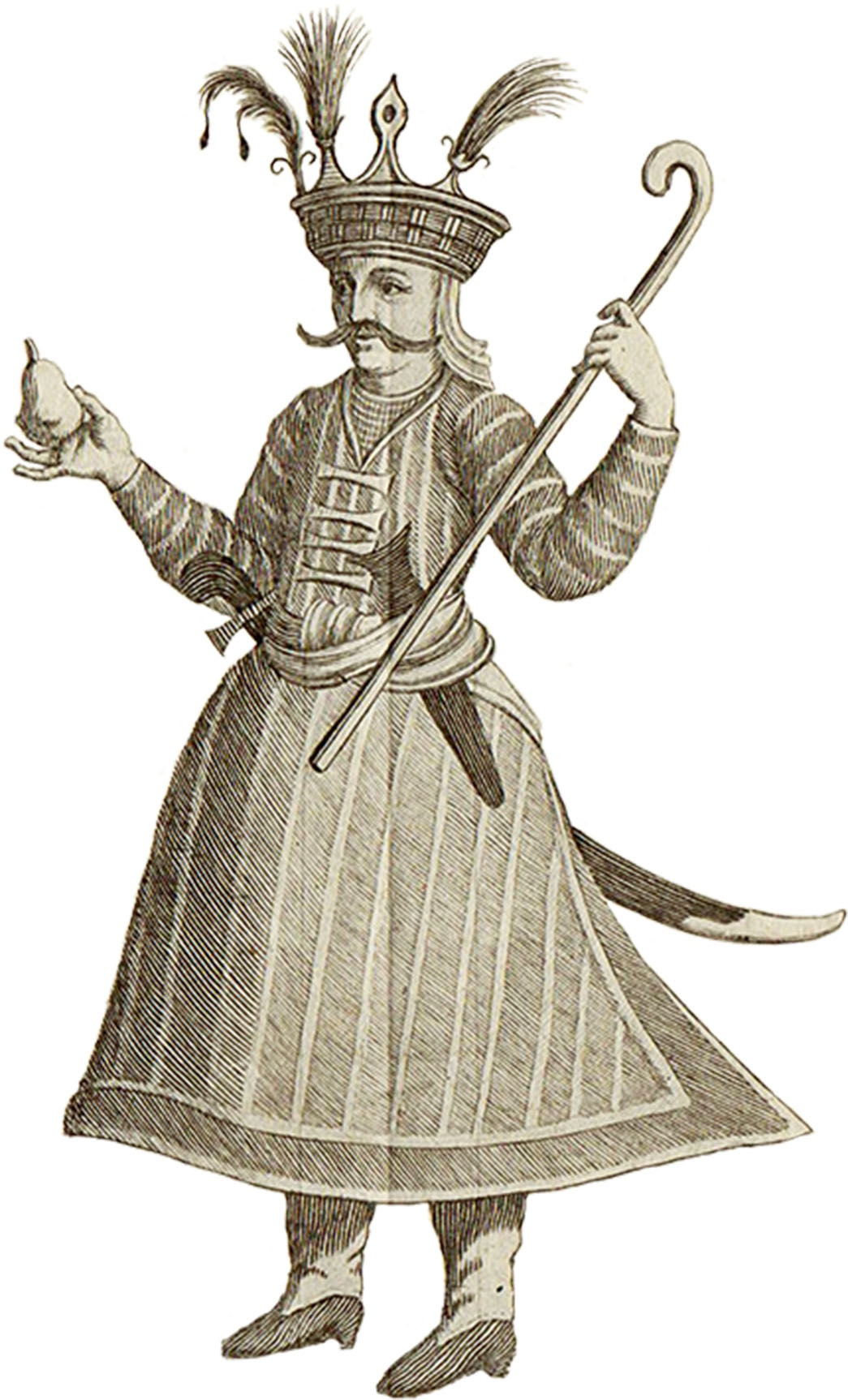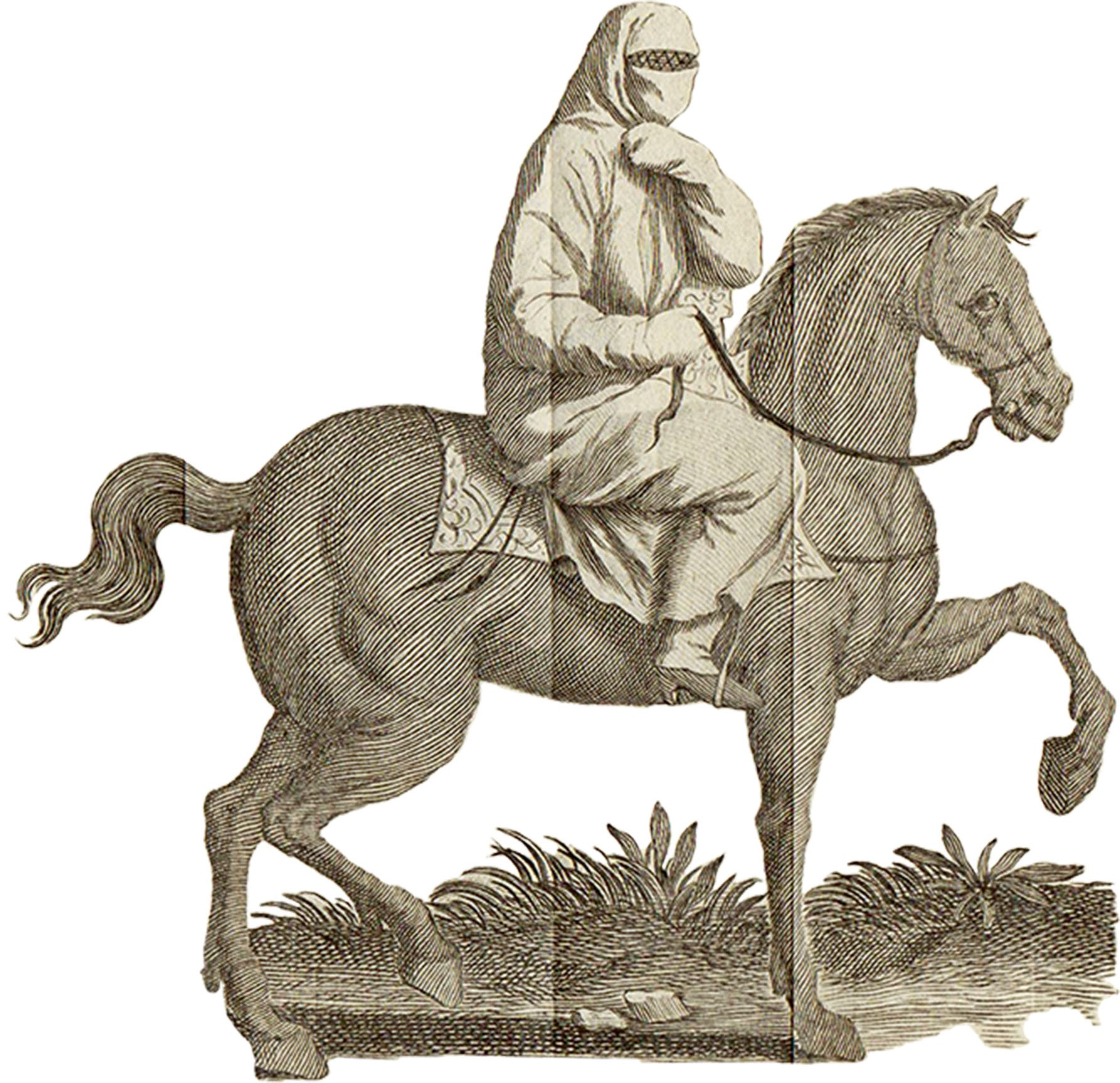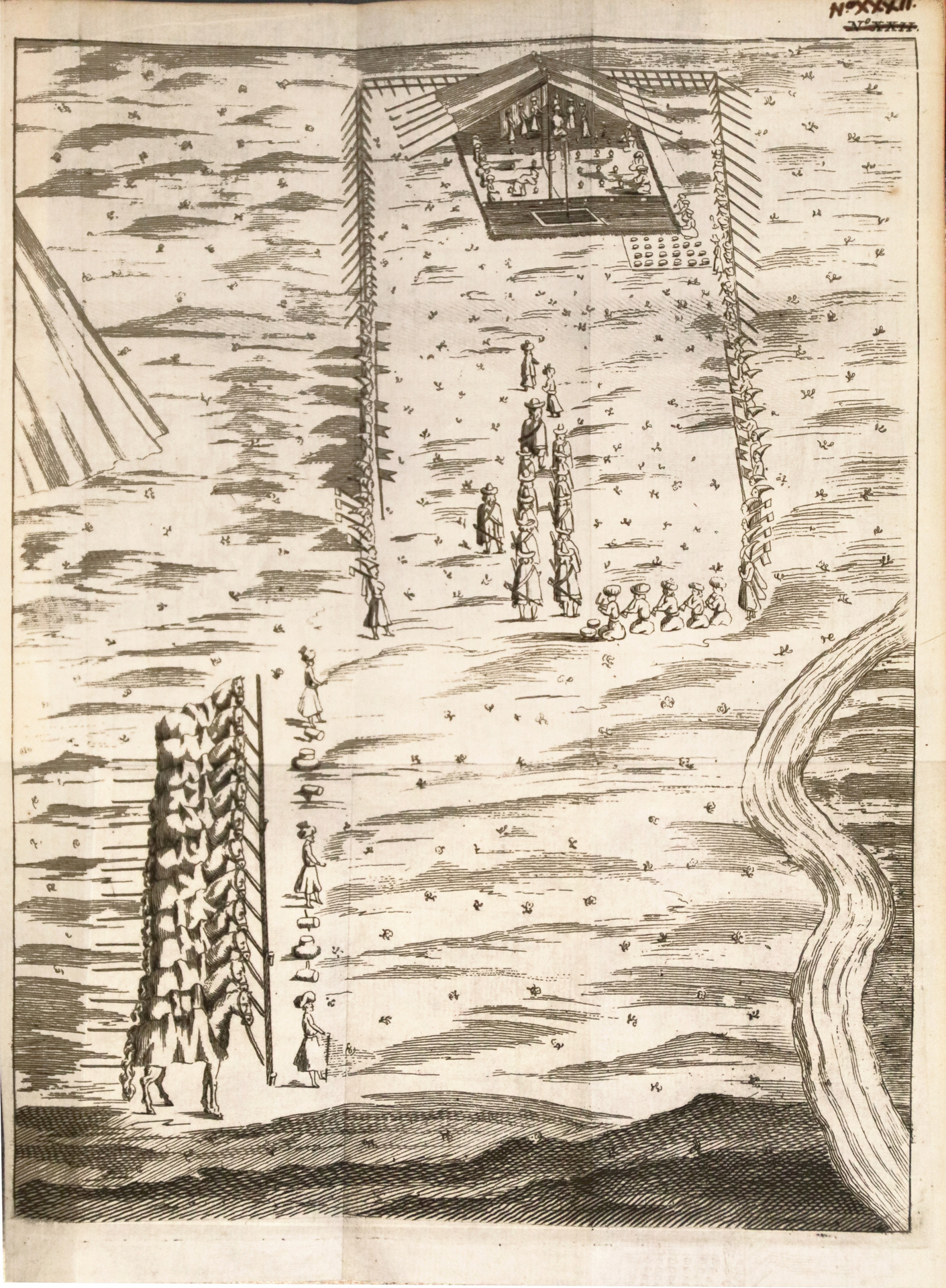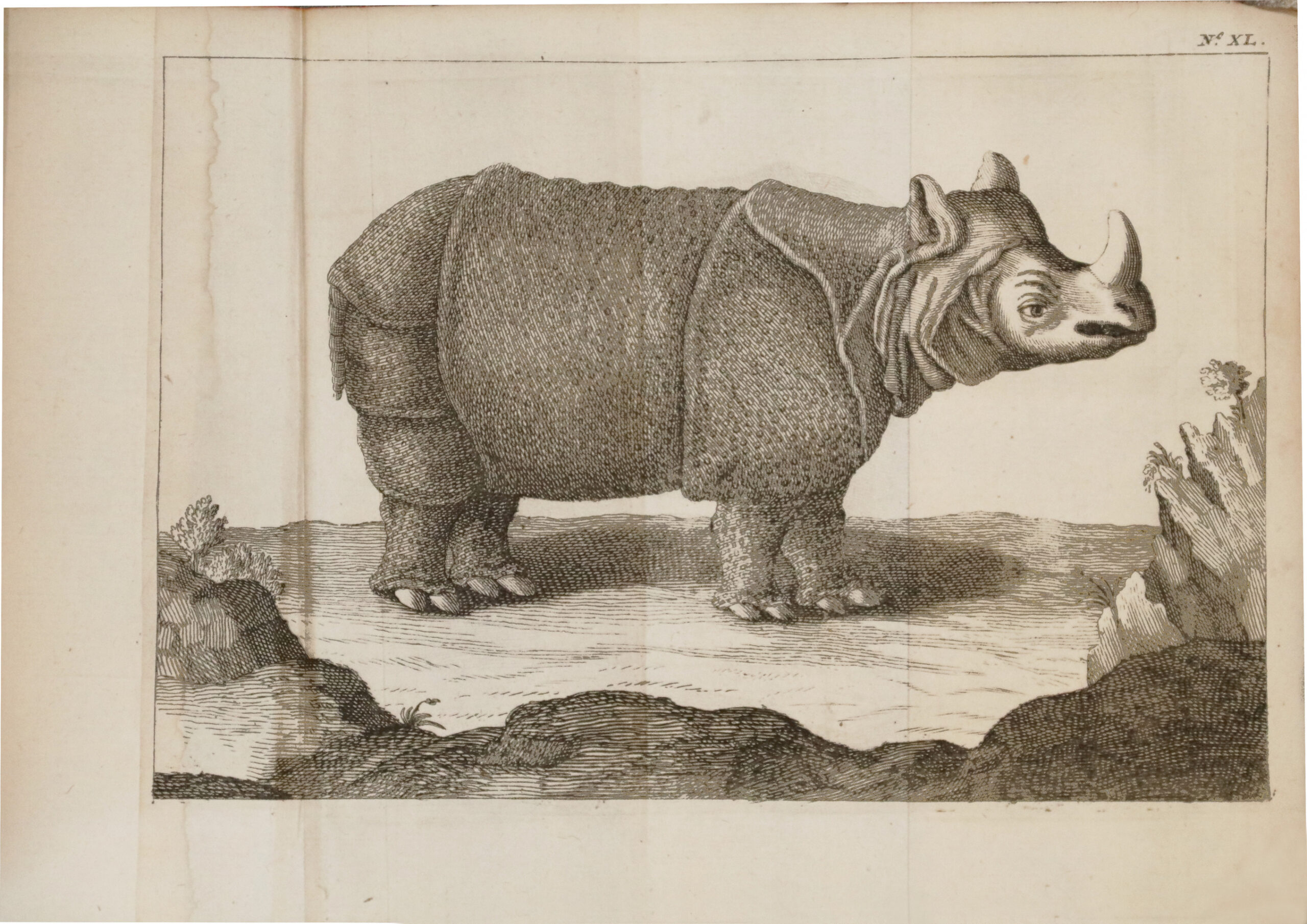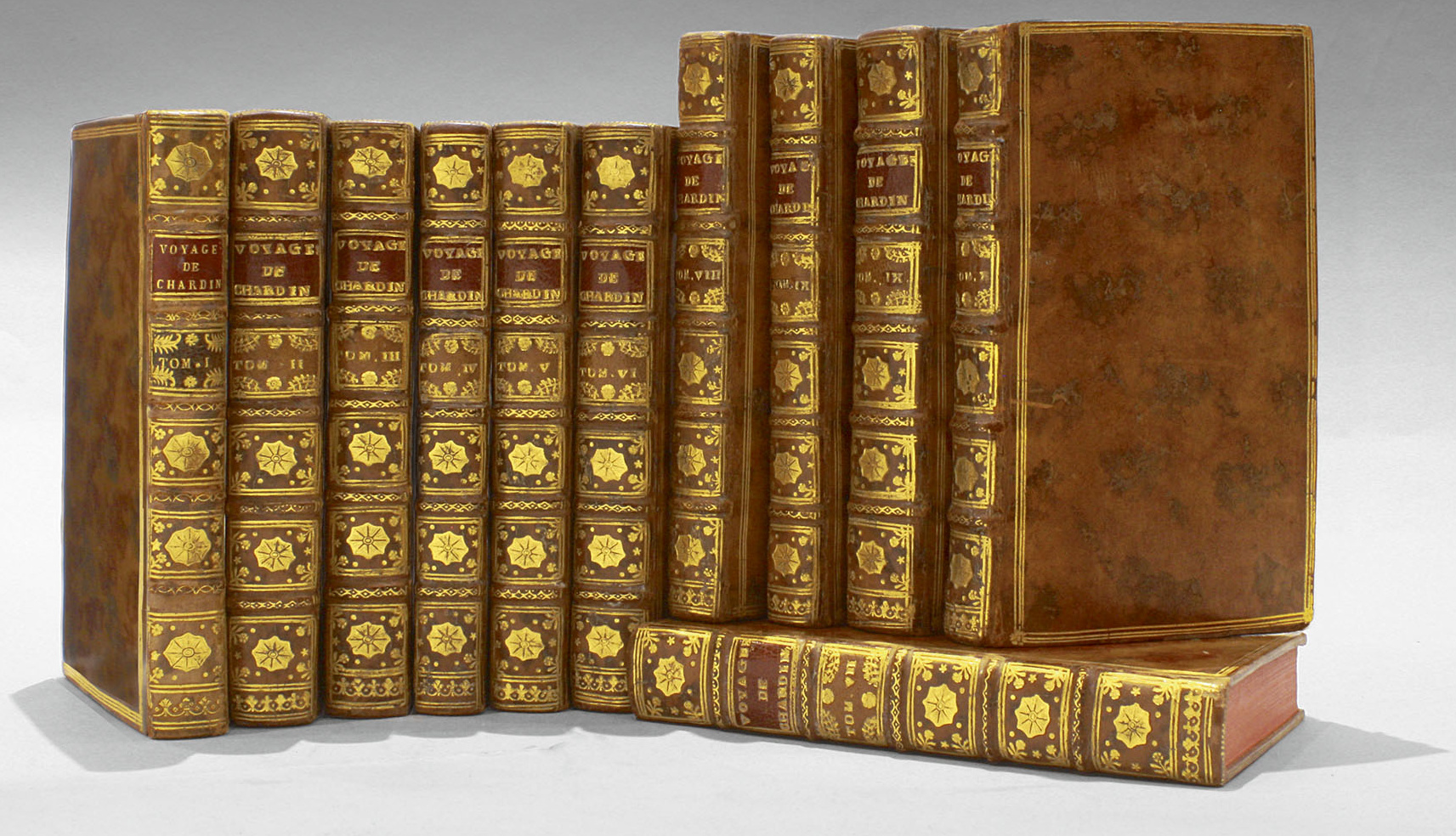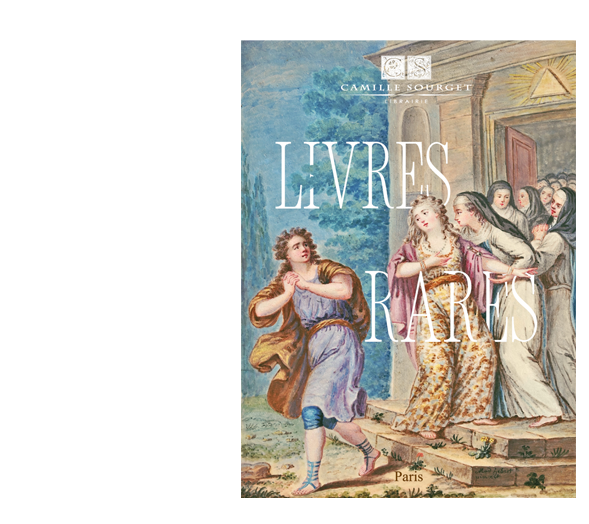Paris, Denys Horthemels, 1723 (tome 1), Amsterdam, Jean-Louis de Lorme, 1711 (les 9 autres tomes).
10 parts bound in 11 12mo volumes of:
I/ (15) ll. with priviledge, 254 pp., 1 portrait of the author, 1 folding map, 1 plate;
II/ 334 pp., 9 folding plates;
III/ 285 pp. 7 fold. pl.;
IV/ 280 pp. 6 fold. pl.;
V/ 312 pp., 4 fold. pl. and 6 folding tables;
VI/ 328 pp., 5 fold. pl.;
VII/ 448 pp.;
VIII/ 255 pp., 16 fold. pl.;
IX/ (Volume of text) 308 pp. / (Volume of plates) 29 fold. pl.;
X/ 20 pp., (41) ll. of table.
Only the 1st volume is dated 1723, the others are dated 1711. Very slight waterstain at the head of vol. 2, slight waterstain in the inner margin of part 3. Full tawny mottled calf, triple gilt fillet around the covers, ribbed spines decorated with gilt cobwebs, lettering pieces in red and lemon yellow morocco, inner gilt border, red edges. Contemporary binding.
161 x 93 mm.
The first complete Edition, partly original, of the best description of Persia from the 17th century. This famous book of travels was the first to give an exact knowledge of the situation of this particularly popular region in the 18th century.
Brunet, I, 1802 ; Chadenat 547 ; Atabey 219. Pas dans Blackmer.
« This travel is one of the most interesting that was published during the last century. The edition we quote is quite beautiful, and the copies well bound are hard to find. » (Brunet)
« A sought-after edition, illustrated with a portrait, a map and many folding illustrations. » (Chadenat)
Son of a Protestant jeweler working on Place Dauphine in Paris, Jean Chardin (1643-1713) quickly showed a strong predilection for travels, where the attraction to new horizons combined with the hope of starting a profitable business. He took two long trips in Middle-East. During his first trip between 1664 and 1670, he long stayed in Isfahan, and was appointed as “the Shah’s merchant”. When he came back, he published a book of travels on Suleiman III’s crowning (1671). His second trip to Middle-East took place between 1671 and 1677. In 1686, he published in London the travel journal of his second trip to Isfahan (of which Bayle made a strong praise), then, in 1711, a much more complete edition containing, in addition to the same travel journal, a very meticulous presentation of Persia, with chapters on its literature, history, religion and political life, including a specific description of Isfahan and the travel narrative of a trip in Hormuz.
“His official position, his relations with the main characters, the knowledge he quickly got of the country’s idioms, allowed him to gather many information about the government, the habits, the antiquities, the monuments and the history of Persia. He had brought with him a skilled drawer, and was accompanied with him in all his explorations, and he was then able to bring back exact reproductions of monuments, of costumes, of the ruins of Persepolis, of arms, of utensils…
It was claimed that the academician Charpentier had helped Chardin in writing his book. Be as it may, what truly belongs to this illustrious traveler, are the precious materials gathered with so much intelligence and courage, these searches, observations, these curious and authentic information about the history, the administration, the legislation, the habits, the sciences, the arts, the customs of a country almost unknown until then.”
Langlès says that “the unanimous testimonies of travelers, who have visited and described the same regions since Chardin, only confirm the accuracy and the profoundness of his observations, the variety of his knowledges and his veracity.”
The abundant copper-engraved illustration contains 1 portrait of the author, 1 large map and 77 large plates, most of them folding: views, monuments, costumes, antiquities,… as well as engraved head-pieces at the head of chapters. Some plates measure more than 1m by 165 mm. Chardin was accompanied with a drawer, Grelot: all the views, sceneries and portraits were drawn from life and the engravings are exceedingly interesting for the study of costumes and of habits and the representation of the costumes of the Persians and the Indians.
An attractive copy of this interesting travel relation highly illustrated, in a fine and beautiful condition, in contemporary mottled calf with particularly decorative spines with wide gilt cobwebs.
